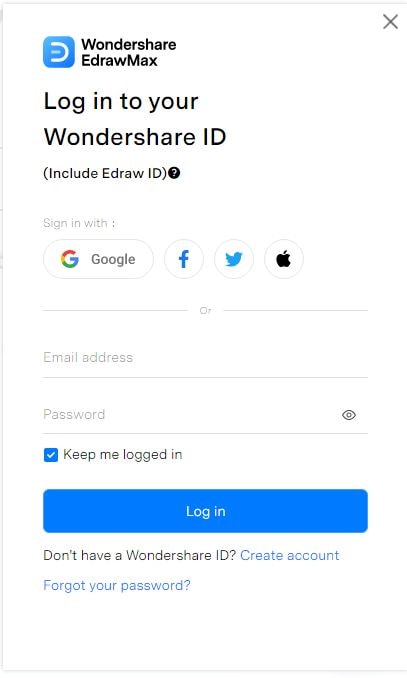The Visio file format is a binary format that contains all the information needed to display and manipulate visual elements created in Visio. Converting these files to XML format offers several benefits. However, it is important to follow best practices when converting Visio to XML. Here, we will discuss the benefits of converting to XML and more.
In this article
Part 1. Overview of Visio File Format
The Visio file format is a binary file format that contains all the information necessary to display and manipulate the visual elements created in Visio. This includes information about shapes, connectors, text, formatting, and other properties of the visual elements. The file format also includes metadata such as author information, creation date, and revision history.

Part 2. Benefits of Converting Visio to XML
Converting Visio to XML format offers several benefits that can enhance the usability, interoperability, and long-term preservation of the visual representations created in Visio.
- Enhanced Accessibility:XML is a text-based format that can be easily parsed and manipulated using a wide range of programming languages and tools. Converting Visio files to XML makes the content more accessible for individuals and systems that may not have direct support for the proprietary Visio file format.
- Improved Interoperability:XML is a widely adopted standard for representing structured data, making it easier to exchange information between different software applications and platforms. By converting Visio files to XML, the visual representations can be integrated more seamlessly into other systems and workflows.
- Long-Term Preservation:The use of XML as a preservation format for Visio files can help ensure the long-term accessibility and usability of the visual representations. XML is based on open standards and is not tied to any specific software application, reducing the risk of format obsolescence and ensuring that the content remains accessible in the future.
- Customization and Transformation:Once converted to XML, Visio files can be more easily customized and transformed to meet specific requirements. XML provides a flexible and extensible framework for representing data, allowing for the addition of custom metadata, styling information, and other enhancements to the visual representations.
Part 3. Best Practices for Converting Visio to XML
When converting Visio to XML, it's important to follow best practices to ensure the integrity of the data and to maximize the benefits of the conversion process.
- Preserve Metadata and Annotations: During the conversion process, it's essential to preserve the metadata and annotations associated with the visual representations in Visio. This includes information such as authorship, revision history, comments, and other contextual data that may be important for understanding the content.
- Maintain Visual Integrity:The conversion to XML should aim to maintain the visual integrity of the original Visio files, including the layout, formatting, and spatial relationships of the visual elements. Care should be taken to ensure that the converted XML accurately reflects the visual representations created in Visio.
- Embed External Resources:If the Visio files reference external resources such as images, fonts, or other media, it's important to embed these resources within the XML representation to ensure portability and self-containment. This can be achieved using appropriate XML mechanisms for including external content.
- Embed External Resources:If the Visio files reference external resources such as images, fonts, or other media, it's important to embed these resources within the XML representation to ensure portability and self-containment. This can be achieved using appropriate XML mechanisms for including external content.
- Validate and Test the XML Output:After the conversion process, it's crucial to validate and test the XML output to ensure that it conforms to the chosen XML schema and accurately represents the original Visio content. This may involve using XML validation tools and visual inspection of the converted XML content
Part 4. Creating a Flowchart Easily Using EdrawMax
Wondershare EdrawMax stands out as the best tool for creating diagrams because it offers a versatile platform that caters to various industries and purposes. Whether you need to create business diagrams, technical drawings, or educational visuals, the tool provides a comprehensive set of tools and templates to meet your specific needs. These are the steps to create a flowchart using the tool:
Step 1: The first step is to log into Wondershare EdrawMax. Take caution when entering your email address and password.

Step 2: A new document must now be opened. To do this, select a new document by clicking the 'New' button in the top left corner of the screen.

Step 3: The template library may be accessed by clicking the "Templates" button located on the left side of the screen. Choose the "Flowchart" template after finding it.

Step 4: Modify the flowchart according to your own tastes. To customize your flowchart to your preference, utilize the pre-made shapes and symbols that are available in the template.

Step 5: Your flowchart is now ready for saving. Choose "Save As" from the left navigation pane to store your flowchart.

Step 6: To make it easier to share with your team, export the flowchart in the file format of your choice. Click "Export and Send" from the menu bar on the left to do this.

Conclusion
Understanding the Visio file format, recognizing the benefits of converting Visio XML, and following best practices for the conversion process are essential aspects of working with Visio files in a way that maximizes their usability and interoperability. Individuals and organizations can effectively utilize the visual representations created in Visio for a wide range of purposes by adopting these principles.





